Why Singapore’s kids are so good at maths
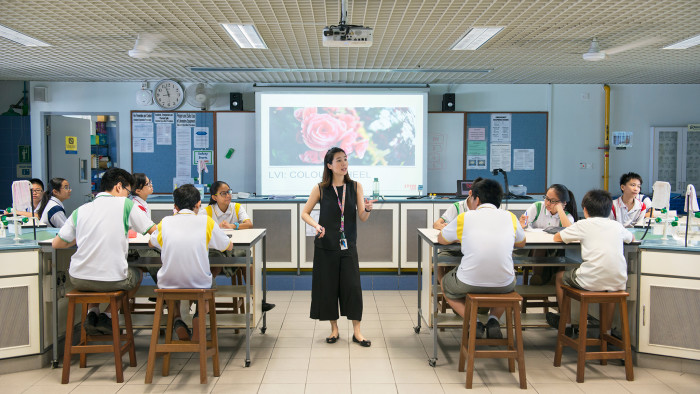
Simply sign up to the Life & Arts myFT Digest -- delivered directly to your inbox.
Sie Yu Chuah smiles when asked how his parents would react to a low test score. “My parents are not that strict but they have high expectations of me,” he says. “I have to do well. Excel at my studies. That’s what they expect from me.” The cheerful, slightly built 13-year-old is a pupil at Admiralty, a government secondary school in the northern suburbs of Singapore that opened in 2002.
A city-state of just 5.5 million people, Singapore is routinely ranked at or near the top in global comparisons of mathematical ability and boasts one of the most admired education systems in the world. In a league table based on test scores from 76 countries published by the OECD in May last year, Singapore came first, followed by Hong Kong, South Korea, Japan and Taiwan. The rankings, based on testing 15-year-olds’ abilities in maths and science, reinforced a sense that western children were slipping behind their Asian peers. The UK was in 20th place and the US 28th in the table.
At meetings of the world’s education ministers, when it is Singapore’s turn to speak, “everyone listens very closely”, says Andreas Schleicher, head of the OECD’s education assessment programme. Governments around the world have sought to incorporate elements of the “Singapore model” into their own approach to teaching maths and science. The latest is the UK, which earlier this month announced that half of England’s primary schools would adopt the style of maths teaching that is used in Singapore, with up to £41m in funding over four years to train teachers and provide new textbooks. But what is it about Singapore’s system that enables its children to outperform their international peers? And how easy will it be for other countries to import its success?
A densely populated speck of land in Southeast Asia, Singapore is bordered by Malaysia to the north and the leviathan archipelago of Indonesia to the south. The former British trading post gained self-rule in 1959 and was briefly part of a Malaysian federation before becoming fully independent in 1965. A sense of being dwarfed by vast neighbours runs deep in the national psyche, inspiring both fear and pride. In a speech to trade union activists on May Day last year, prime minister Lee Hsien Loong told citizens: “To survive, you have to be exceptional.” The alternative, he warned, was being “pushed around, shoved about, trampled upon; that’s the end of Singapore and the end of us”.
Every morning, Admiralty pupils gather for assembly beneath banners that make the same point in less rhetorical fashion. “No one owes Singapore a living,” declares one of the hoardings. “We must ourselves defend Singapore,” another reads.
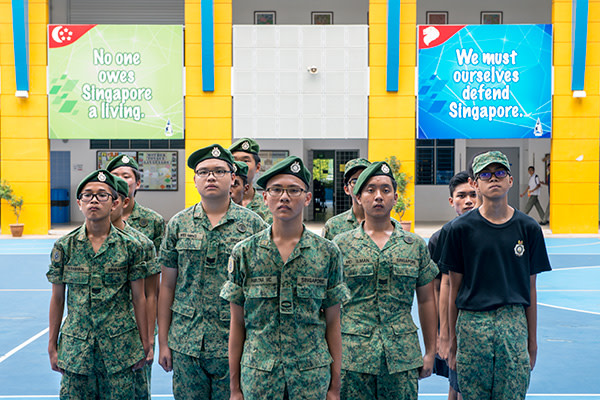
For admirers of the city-state’s educational model, the good news is that its world-beating school system was created in a relatively short period of time. Under British rule, education had been the preserve of the affluent. Most of the population — Chinese, Malay and Tamil migrants and their descendants — were illiterate. Singapore’s post-independence government, led by its first prime minister Lee Kuan Yew, expanded the school system to cover the entire population. Attracting foreign investors and building a successful manufacturing sector was regarded as a crucial step in the state’s postcolonial development. Lee, an authoritarian and perfectionist who led the country for some 30 years, believed that schools served a dual purpose: to forge a unified English-speaking nation from a multilingual population, and to supply factories with workers. For Singapore to survive and prosper, he said in 1966, “what is required is a rugged, resolute, highly trained, highly disciplined community”.
Education is still discussed by the city-state’s politicians primarily in terms of economic utility. In his speech in May 2015, Lee Hsien Loong described a conversation with the South Korean minister for education. “We compared notes and I told him in Singapore we try to train people for the jobs they can fill. When our students graduate they find jobs straightaway. He was envious,” Lee said.
Lee went on to note disparagingly that South Korea has more institutions teaching German literature than Germany does: “How many German teachers do you need in Korea?” he asked, pointing out that Korean students with a degree in subjects such as German would face the same problem of youth unemployment as in many other countries.
Maths and science are core subjects in Singapore, taught throughout primary and secondary education. While students can choose to study humanities for A-levels, they must continue studying either maths or at least one science subject until they leave school (the reverse is also true: science students must take one subject from the humanities). From the later years of primary school onwards, children have specialist maths teachers.
The “Singapore method” was first developed by a team of teachers in the city-state in the 1980s, who were given the task of creating high-quality teaching materials by the ministry of education. They studied the latest behavioural science research as well as travelling to schools in other countries, including Canada and Japan, to compare the effectiveness of different teaching methods. Aiming to move away from simple rote-learning and to focus instead on teaching children how to problem solve, the textbooks the group produced were influenced by educational psychologists such as the American Jerome Bruner, who posited that people learn in three stages: by using real objects, then pictures, and then through symbols. That theory contributed to Singapore’s strong emphasis on modelling mathematical problems with visual aids; using coloured blocks to represent fractions or ratios, for example.
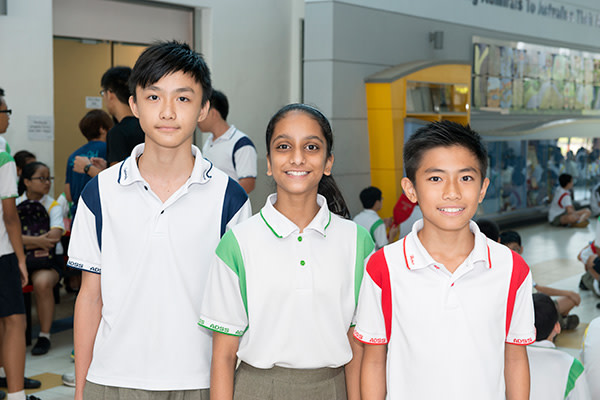
The Singapore curriculum is more stripped down at primary level than in many western countries, covering fewer topics but doing so in far greater depth — a crucial factor in its effectiveness, according to the OECD’s Schleicher. “When you look at England and the US, [their curriculums] are mile-wide and inch-deep,” he says. “They teach a lot of things but at a shallow level. Mathematics in Singapore is not about knowing everything. It’s about thinking like a mathematician.”
It is taken for granted in the west that some children have greater ability at particular subjects than others. Not so in Singapore, where diligence is prized over talent. Tim Oates, who was in charge of a review of England’s national curriculum in 2010-2013 and is now director of research at the exam board Cambridge Assessment, says this approach is finally being adopted in the English system. “It is a different approach to ability — really, a major overhaul of the way in which children are viewed,” he says. “A switch from an ability-based model of individualised learning, to a model [which says that] all children are capable of anything, depending on how it is presented to them and the effort which they put into learning it.”
Linked to this idea, the Asian approach to maths also favours teaching the class as a whole, rather than breaking the class into smaller groups of different abilities to work through exercises. The whole-class approach allows the teacher to spot weaknesses and intervene swiftly if a child needs help, rather than waiting for them to get stuck on a problem and calling for attention.
. . .
The classrooms at Admiralty are sparsely decorated. When I visit a class of 13-year-olds, there’s a single artwork on the back wall; a paper cut-out of a cherry tree scattering blossom. At the front, where the teacher stands, is a whiteboard, a projector, a Singapore flag and a clock. I am later told that other decorations had been removed to avoid distracting or aiding students during a round of tests.
The subject is English, a second language for most of the children here, who speak either Malay or Chinese at home. At the front of the class, the teacher, Wendy Chen, is showing a film of migrant workers responding to racist comments. It’s a controversial subject: foreign labourers who work in construction, manufacturing and domestic service are often targets of racial prejudice in Singapore. Chen strips the language down to its constituent parts, asking the 13-year-old students to look at the use of the pronouns “we” and “they”. She hands out a newspaper cutting, again about migrant workers, and asks them to analyse it. “Underline who, what, when, where, how,” she instructs briskly.
The atmosphere is industrious. Throughout the day, the children work quietly at their tasks with relatively little chatter. Corporal punishment is permitted as a last resort — for boys only — at Singapore schools. When the teachers need to command attention, they strike an insistent note rather than raising their voices. One teacher, as she senses her class flagging, begins to pepper her instructions with the phrase “my dears”. Further absorbing discipline, many of the children join police or military cadet organisations, and can be seen dressed in uniform and standing to attention in the schoolyard after class. For the boys, who face two years’ national service after graduating from high school, it’s a particularly useful preparation.
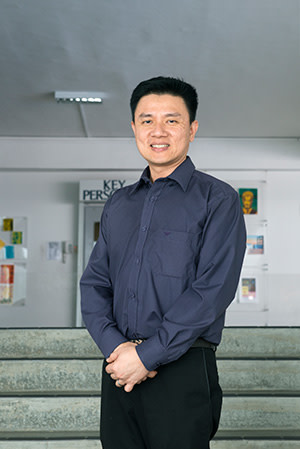
Science is next. The children are being taught programming using a small circuit board, hooked up to an LED. Lines of code vary the light’s colour. Last year, students in this class built a robotic arm. This year, the goal is to build a miniature driverless car — a palm-sized robot with wheels. “Ambitious goals — broken into small steps,” says principal Toh Thiam Chye as he observes the class at work. The lights might be incorporated into the driverless car project as part of an LED messaging system, he says. The science teacher, pacing around the lab, says that the children are becoming so familiar with the computer code that some are experimenting with it. “They are tinkering with changing the display … changing the colours of the LED,” she notes with approval.
There’s a break for lunch; the children spill out from the boxy concrete building to grab plates of rice or noodles in the canteen. Like much of Singapore’s architecture, the school is composed of a series of rectangles; rectangular classrooms face on to a rectangular yard. Its whitewashed walls are relieved by occasional stripes of blue or yellow paint. But unlike Singapore’s office buildings, which are so deeply chilled by air conditioning that workers regularly wrap themselves in sweaters, the classrooms are open to the tropical humidity. Ceiling fans stir the air and the chatter of other children sometimes drifts through the open windows.
Pupils at Admiralty are gently steered away from the humanities and nudged towards science, Toh Thiam Chye says. After-hours activities such as a robotics club are intended to instil a love of scientific inquiry, as well as prepare for a more automated future. “We want to prepare them for the 21st-century workplace and we also want to meet the needs of the economy,” he says. The island has a “manpower constraint” — of its 5.5 million population, 1.6 million are foreign workers and their dependents. “What we need to do is be ahead of the curve,” the principal says, referring to future demand for workers. A spokeswoman for the ministry of education later clarifies that this is not a matter of policy and that Singapore values the arts; children are encouraged to pursue their strengths, she adds. Admiralty has a strong emphasis on science, while other schools favour humanities, she says. Nevertheless, older Singaporeans I spoke to describe being pushed in the direction of science if they were deemed bright enough to pursue quantitative subjects.
In a maths lesson after lunch, the teacher gets pupils out of their seats as their attention begins to flag in the mounting heat. She invites volunteers to stand at the whiteboard and solve algebraic equations in front of the class. There’s an atmosphere of cheerful rivalry. As one boy stumbles through an answer, then goes back and corrects it, a bumptious classmate hoots at him: “Still wrong!”
In the closing minutes of the class, the children are set a test. They work on tablet computers and as they answer, their scores are projected on to the screen at the front. One boy, working fast, lifts his tablet in the air with pride. He has got to the end and his tablet screen displays his results as a pie chart that’s nearly all green. Hardly any wrong answers. A classmate high-fives him.
. . .
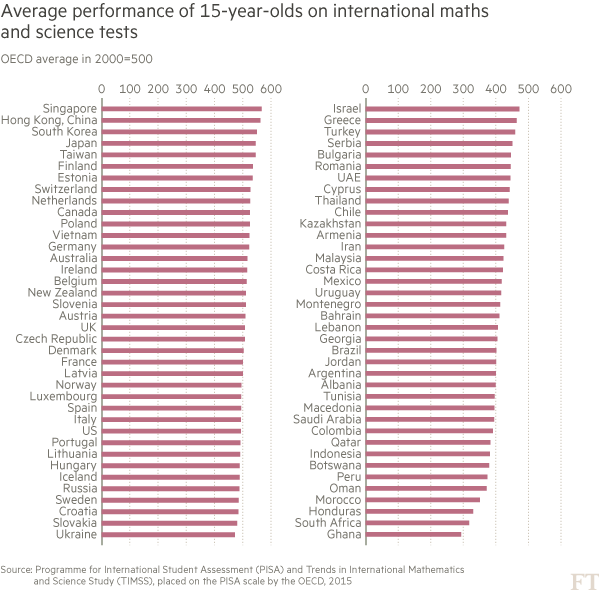
Singapore’s success is not about money. The city-state spends about three per cent of GDP on education, compared with about six per cent in the UK and nearly eight per cent in Sweden. But the Singapore system is remarkably effective at offering teachers the freedom to improve their practice. Teachers are given time in the school day to evaluate their work, and to observe each other’s lessons. A successful teacher is not pushed towards management, as is often the case elsewhere, but given opportunities to be a mentor or take a hand in designing the curriculum. Schleicher of the OECD says: “In other school systems we make the best teacher a poor administrator.”
East Asian countries tend to favour bigger class sizes, he adds, which means teachers spend less time in front of the class each week. In Korea and Japan, secondary school teachers spend about 15 hours a week teaching, compared with nearly 20 hours in England and more than 27 hours a week in the US. This frees up more time to prepare lessons or critique the ones they’ve delivered.
Yet for all the admiration Singapore’s school system earns abroad, it is frequently disparaged at home. Privately, parents confide fears that the exam-oriented system places too much strain on their children, and worry that the emphasis on academic achievement from an early age can come at the expense of a balanced upbringing. Children are often tutored after school for hours in order to pass their exams. In contrast, the education system in Finland — which is also highly rated by the OECD — emphasises social development ahead of academia in a child’s early years, focusing on play rather than classroom work. Melissa Benn, the British writer and education campaigner, says: “There is a tradition in European education of starting school later in life, and much more inquiry through play. I think there’s a strong argument for emphasising the benefit of play.” Every country has its own distinctive approach to education, Benn argues, adding: “What England is good at is a more relaxed and more independent way of thinking.”
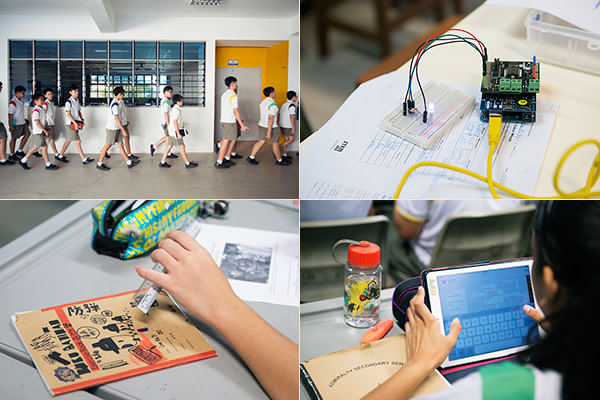
Within Singapore, there are also concerns that the existing system sharpens inequality, and that streaming skews the system against late developers. While the government’s educational motto is that “every school is a good school”, not every Singaporean parent subscribes to this belief. There is intense competition to get into the most prestigious schools, such as the Raffles Institution, set up in the 19th century by Singapore’s British founder, Sir Stamford Raffles. It is one of a few state-funded but independently run elite schools on the island. All schools in Singapore charge some level of fees; about S$25 a month, or £14, at neighbourhood schools, which is a modest sum for most people. But independent schools can set higher fees, as well as restrict class sizes and design their own curricula.
At the Raffles Institution’s annual Founder’s Day last year, school principal Chan Poh Meng expressed the fear that the school had become dominated by middle-class families who could coach their children most effectively through the primary school leaving exam, which determines whether pupils carry on into secondary education or are diverted on to a less challenging academic track. Like many other east Asian nations, Singapore has a thriving tuition industry. Private crammers do not dominate children’s lives to the dismal extent that they do in South Korea (where the government has had to ban tuition centres from teaching after 10pm) but, for many Singaporean pupils, the formal end of the school day does not mean the end of lessons. A few years ago, a survey by the ministry of education found that more than half of primary school pupils were receiving private tuition in subjects they were already doing well in.
Meritocracy is an element of the glue that binds Singapore together. Alongside the promise of shared prosperity and security, the idea that the brightest can rise to the top is a component of the political bargain that the city-state has struck with its citizens, under which some political freedoms are restricted in exchange for significant material benefits. But the opportunity to ascend from humble origins to the elite of Singapore’s society is becoming increasingly rare, observers say. Social mobility is diminishing in Singapore because of the rising cost of education, says Michael Barr, an associate professor in international relations at Flinders University in Adelaide. “A few decades ago, education was a way that poor people could rise,” he says. “That has become less and less so. It costs money to engage in tuition. It costs money to engage in extra-curricular activities. You have to be middle-class to have the resources to put into your child’s education; a tiger mother with deep pockets.”
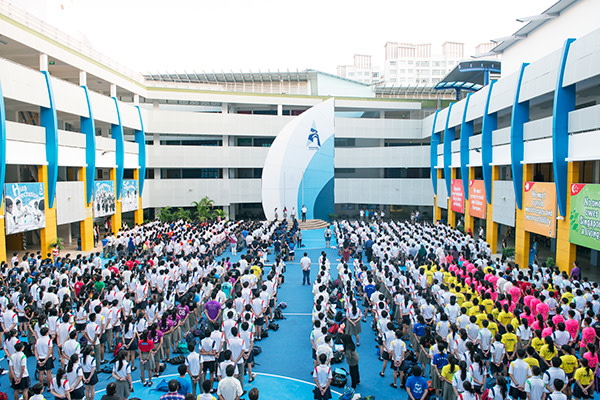
Perhaps the most stinging criticism, and one that’s often aired in private by concerned parents, is that Singapore’s system deters creativity.
While Singapore is not the only country to look at Silicon Valley and wonder about its own lack of entrepreneurial spirit, parents here worry that a prescriptive education may dull their children’s creative edge. An academic at a Singapore university told me that many of his students had been fashioned into “learning machines”, unable to deal with a situation that did not have a binary “right or wrong” answer.
A Singaporean bank executive and father of three, who asked not to be named, criticised a narrow focus on achieving top grades, which he regarded as the product of hard work as much as intelligence. “It’s a system that really channels you through the network as they deem fit. It’s their criteria, which is grades,” he says. “There’s nothing else. My question is: is that a fair assessment of someone’s capability? I don’t know whether you associate top grades with high IQ. I don’t think so.”
He praised the system for developing good “technical skills” in maths and imparting facts but said there was an unhealthy emphasis on drilling children according to an approved method. In his experience, children were marked down for using their own methods to solve maths puzzles, even if the answers were correct, he said. “When they’re given a set of [maths] problems … some children turn to their own logic. And the answer’s right, but they’re considered wrong. You’re stifling someone’s ability to think for themselves. You’re like robots. You can’t think out of the box.”
The perceived rigidity of Singapore’s education taps into broader anxieties among the island’s population. Singaporeans frequently use the Hokkien Chinese word kiasu to describe themselves. The term translates as “being afraid to lose out”, and can be used to describe a boor who overloads his plate at a buffet at the expense of fellow diners, or a driver who refuses to let a fellow motorist change lanes. When applied to education, kiasu refers to parents who push their children hard from a well-founded fear that they will lose out to their peers. But it is also used as shorthand for a concern that Singaporeans lack imagination and enterprise. In a parliamentary debate this year, the Singaporean MP Kuik Shiao-Yin expressed concern that an ingrained aversion to loss was creating a generation of “grantpreneurs” who chased government grants for small businesses rather than taking risks to build innovative companies.
It’s hard to quantify the difference in creativity between nations. It’s true that two of the best-known names in Singapore’s tech start-up scene — the ride-sharing app Grab and the online entertainment company Garena — were both founded by entrepreneurs brought up abroad: Malaysia in the case of Grab, and China in the case of Garena. Then again, this is a small island.
Just over a decade ago, Singapore’s government — conscious of the criticism that their school system is too strait-laced — sought to relax it, adopting the slogan “teach less, learn more”. They wanted to spur independent thinking and encourage students to follow their passions. The syllabus was trimmed and homework reduced, and students were also given more choice over the subjects they study.
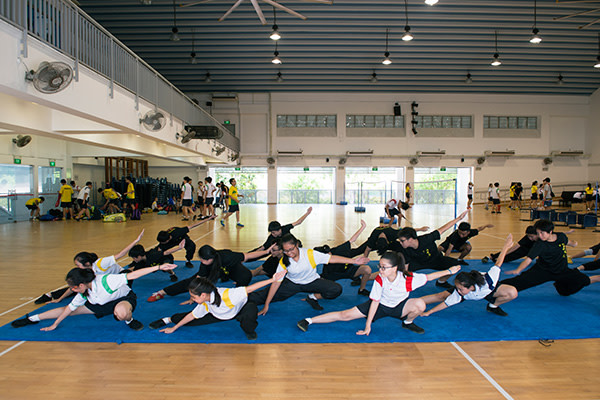
But Linda Lim, a Singaporean professor at the University of Michigan’s Ross School of Business, says the government’s attempts to loosen the school system have had little impact. “These changes are so far too limited to overcome the entrenched institutional and cultural bias of schools and parents toward exam results, which they accurately perceive to be the gateway to university admissions and highly compensated civil service and multinational jobs.”
A potential danger for Singapore is that advanced economies increasingly require soft skills — such as imagination or the ability to take risks — as well as hard ones. A system that was effective in an era when mass manufacturing provided employment risks being insufficient for an age when creativity and innovation bring the greatest career rewards.
And yet, it might prove unwise to bet against a nation that has proven nimble in adapting to past changes. For all the admiration their school system attracts, Singaporeans pay close attention to different styles of education abroad, and seek to import the best foreign ideas.
Toh Thiam Chye, the principal of Admiralty, recalls a visit to an alternative school in Canada where pupils were allowed to choose on a daily basis what they studied. He describes the school, gently, as a “little bit unstructured”. He was concerned that the amount of time spent reaching a consensus about the day’s lesson was eating into time spent actually teaching. But even in an environment so radically different from Singapore’s tightly scripted classrooms, he found a useful insight. “I learnt about consultation and character development,” Toh says. “Touching base with students. Enticing them to share experiences.”
Jeevan Vasagar is the FT’s Singapore and Malaysia correspondent
Photographs: Wilfred Lim
Elements of the Singapore method to try at home
● Be a positive role model for maths. Never claim, “I was rubbish at maths,” because every child can be good at maths with self-confidence and support.
● Encourage your child to demonstrate their understanding in a variety of ways, for example by explaining their thinking out loud, drawing a picture or building a physical model.
● Praise children for effort, explanations and perseverance in problem-solving rather than getting the answers right. Build confidence by viewing mistakes as valuable to learning.
● Make maths relevant by turning everyday life into a mathematical conversation. For example, “How many parked cars will we pass on the way to school?”
● Look for multiple ways to solve a problem. Harness creativity rather than insist, “You should do it this way because that’s how I was taught.” Discuss with your child which method they prefer and why.
Tips by Kate Moore, of Maths — No Problem!, a leading provider of Singapore Maths textbooks and training in the UK
Comments